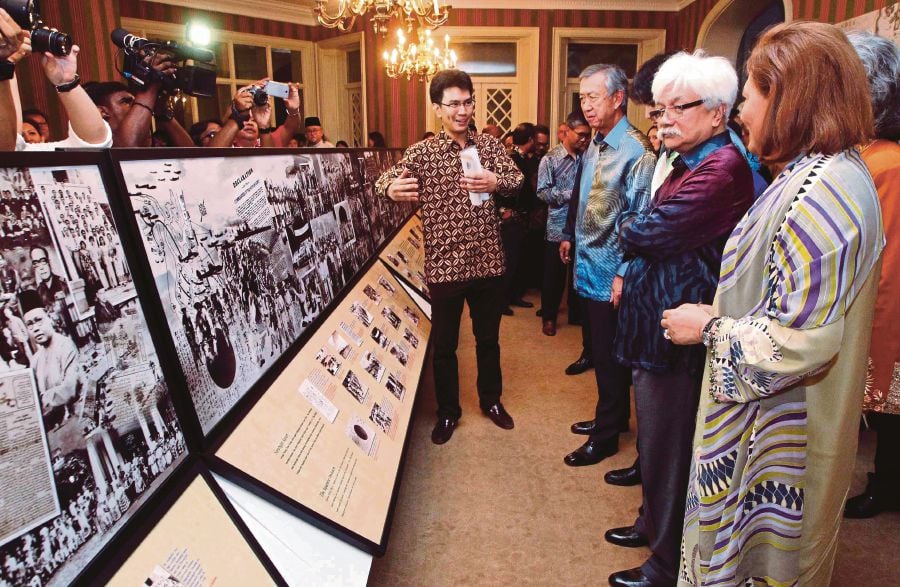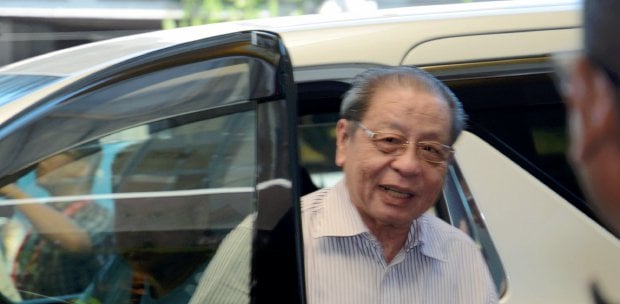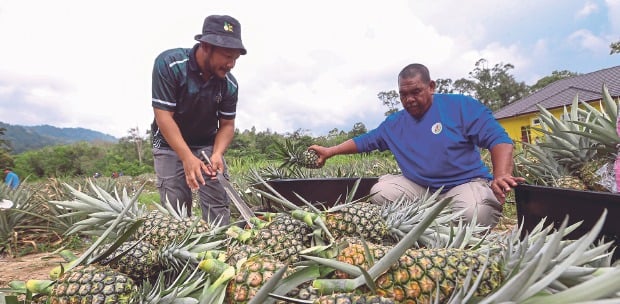IN the current euphoria building up to the next general election, which must be held by June 24, how much do most of the aspiring election candidates really know and understand about our recent history, and how we became a proud nation in August 1957?
Should a wakil rakyat (elected representative) have a good knowledge of how the people of all races struggled to achieve Merdeka and laid the economic foundation of our country in 1957?
Malaya, as a relatively small country at that time, was the world’s largest producer of tin and rubber.
It was also blessed with a fair, just, able and liberal Prime Minister Tunku Abdul Rahman and, as a result, our economy could take off and progress quite rapidly compared with other newly-independent nations.
Tunku Abdul Rahman, as a master strategist, played a crucial role in uniting the people and campaigning for Merdeka, negotiating with the British government to grant independence to Malaya without bloodshed.
Achieving Merdeka was the biggest game-changer of our history in two key aspects:
POLITICS and social — Malaya became a sovereign and democratic nation; and,
ECONOMICS — Malaya started with a good foundation based on tin and rubber.
Without Merdeka, Malaya would not have formed the Federation of Malaysia on Sept 16, 1963. The formation of Malaysia can also be considered a game-changer in the country’s history, as the people of Sabah and Sarawak would be treated with the greatest respect as equal citizens of the new Federation.
In fact, much of the “ethnic conflict” originated from Peninsular Malaysia, and the people in Sarawak and Sabah have tended to live a lot more harmoniously.
Prominent civil society leaders, social entrepreneurs and analysts, such as Tunku Zain Al-‘Abidin Tuanku Muhriz, Tan Sri Ramon Navaratnam, Professor Datuk Dr Adeeba Kamarulzaman, Hamidon Taib, former commissioner of police Datuk Shabudin Abdul Wahab and K. K. Tan, were involved in a social enterprise called the Asian Heritage Museum (AHM).
In commemoration of the 60th anniversary of Merdeka, AHM recently organised a non-profit, patriotic and pro-national unity Jalan Merdeka (Road to Independence) exhibition at the historical buildings of Carcosa and Seri Negara in Kuala Lumpur.
At least four Federal Government agencies collaborated on the contents for this important history project — the Museums Department, National Archives, National Film Board and Finas.
The New Straits Times (the original Straits Times was founded in 1845) provided some interesting old photos and articles.
The curators, led by Tunku Zain, included Netusha Naidu, Mariana Isa and Datin Saidah Rastam.
Jalan Merdeka (JM) is the probably the most comprehensive, diverse and inclusive exhibition of our country’s struggle for Merdeka, with some narratives which were not publicly told before.
It is most apt that JM was held at Carcosa and Seri Negara as these two national heritage buildings were part of the journey to Merdeka.
Carcosa was built in 1895 by Sir Frank Swettenham as the official residence of the first British High Commissioner after the establishment of the Federated Malay States.
Seri Negara was built in 1913 as a government guesthouse for visiting VVIPs, and where the Constitution of Malaya was written from 1955 to 1957, and where the Merdeka (Federation of Malaya) Agreement was signed by the nine rulers on Aug 5, 1957.
It was also the official guest palace for the Yang di-Pertuan Agong and visiting heads of state until the 1970s.
When AHM took over the tenancy of Carcosa Seri Negara last year, the two historical buildings, which were used as boutique hotels before, were in a sad, derelict, un-tenantable and unproductive state to carry out any projects.
But, AHM is thankful to the government for getting the tenancy of Carcosa Seri Negara, and being able to organise JM and other future public interest projects there, such as the regional peace museum and the arts & nature centre.
Many philanthropic organisations and individuals, including CIMB Foundation and Khazanah, provided sponsorship, for which AHM is also extremely grateful.
But, much more funds are needed now due to the numerous extensions for JM, the repair and restoration work required (on parts of the ground floor of Carcosa and Seri Negara), and for the high maintenance and site operations, such as security.
Nevertheless, AHM, with the sacrifice of its stakeholders and the support of like-minded friends, has managed to successfully implement JM beyond the expectations of visitors.
JM is the only project undertaken by AHM at Carcosa Seri Negara, and until the two buildings can be repaired and restored properly, AHM is unable to carry out any other core projects to generate income.
JM was launched on Aug 31 last year by Yang di-Pertuan Besar of Negri Sembilan Tuanku Muhriz Tuanku Munawir.
Entrance is free and the exhibition is open seven days a week from 9am to 6pm. JM has been extended many times due to popular demand, and the latest is until March 31.
The response from the public, including non-governmental organisations, the media, private sector and government agencies and ministries who have visited JM, has been tremendous and positive.
VVIPs who gave the thumbs up included former prime minister Tun Abdullah Ahmad Badawi and Tun Jeanne Abdullah. The Deputy Yang di-Pertuan Agong and Sultan of Perak Sultan Nazrin Muizzuddin Shah visited on Jan 17, and was warmly received by AHM council chairman Tunku Zain and patron Tengku Razaleigh Hamzah.
After a two-hour tour, Sultan Nazrin penned a short and simple statement — “Wonderful Exhibition! Congratulations” — in the comment book.
It spoke volumes of the sacrifices and hard work by AHM and the curators, which have been really worth it.
Aspiring wakil rakyat should visit JM to understand our history better and appreciate how the spirit of Merdeka emerged and united the people of all races to achieve independence.
Perhaps, some clues on how they can be elected to serve the people better may be found at the exhibition.
Of course, members of the public are most welcome to visit JM at Carcosa and Seri Negara.
Azmi Anshar is a former editor of The New Straits Times and Media Associate of Asian Heritage Museum.






